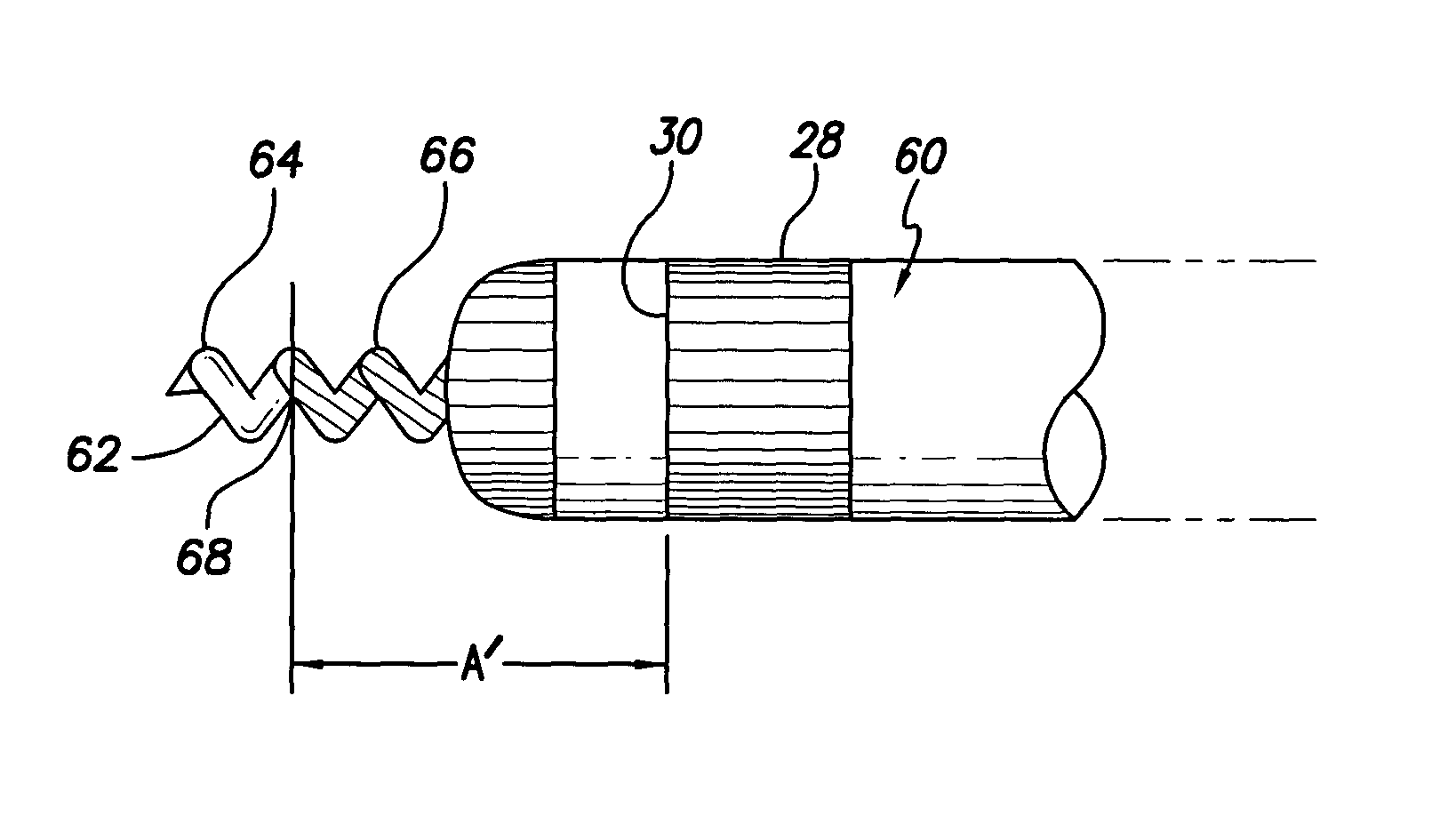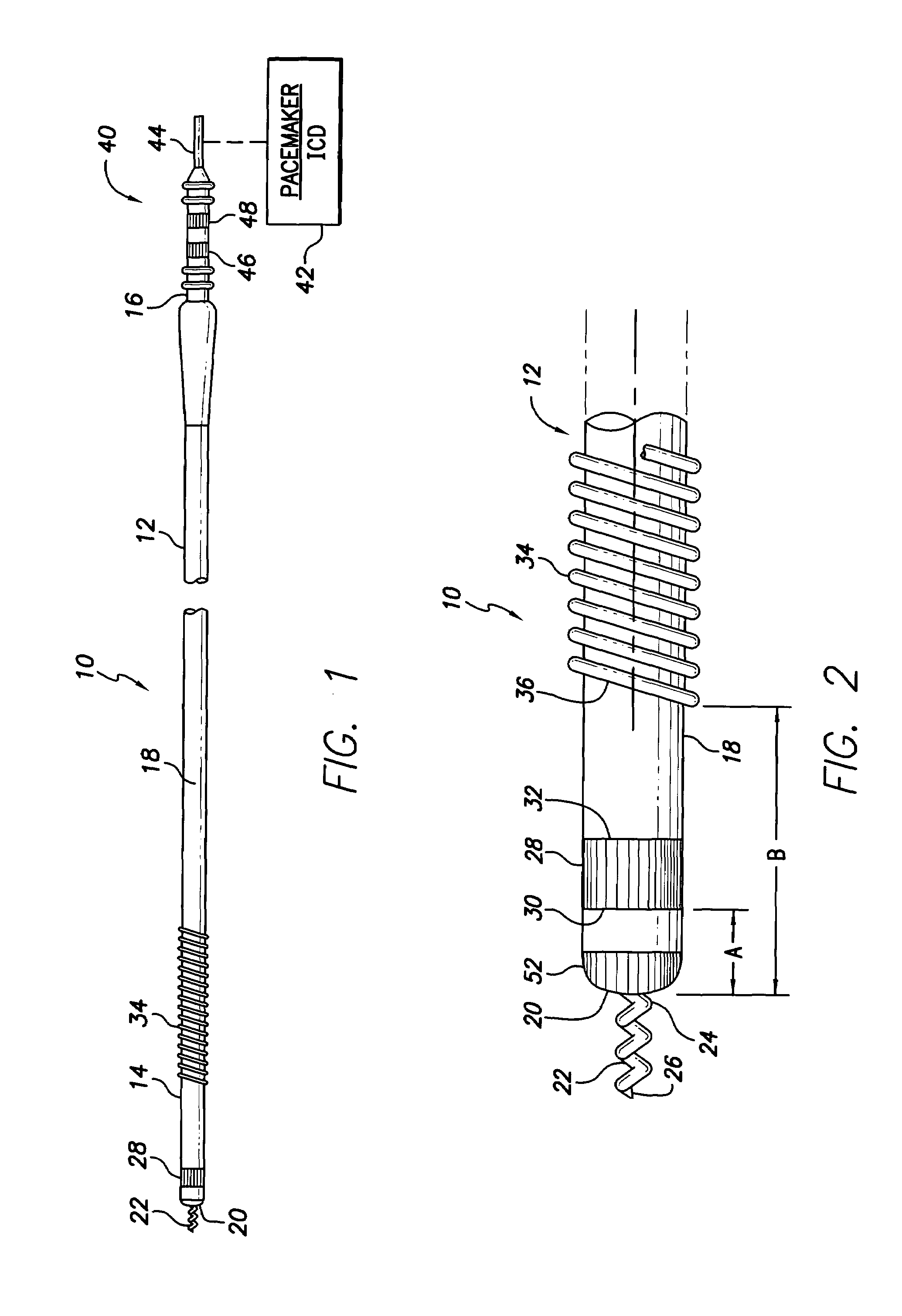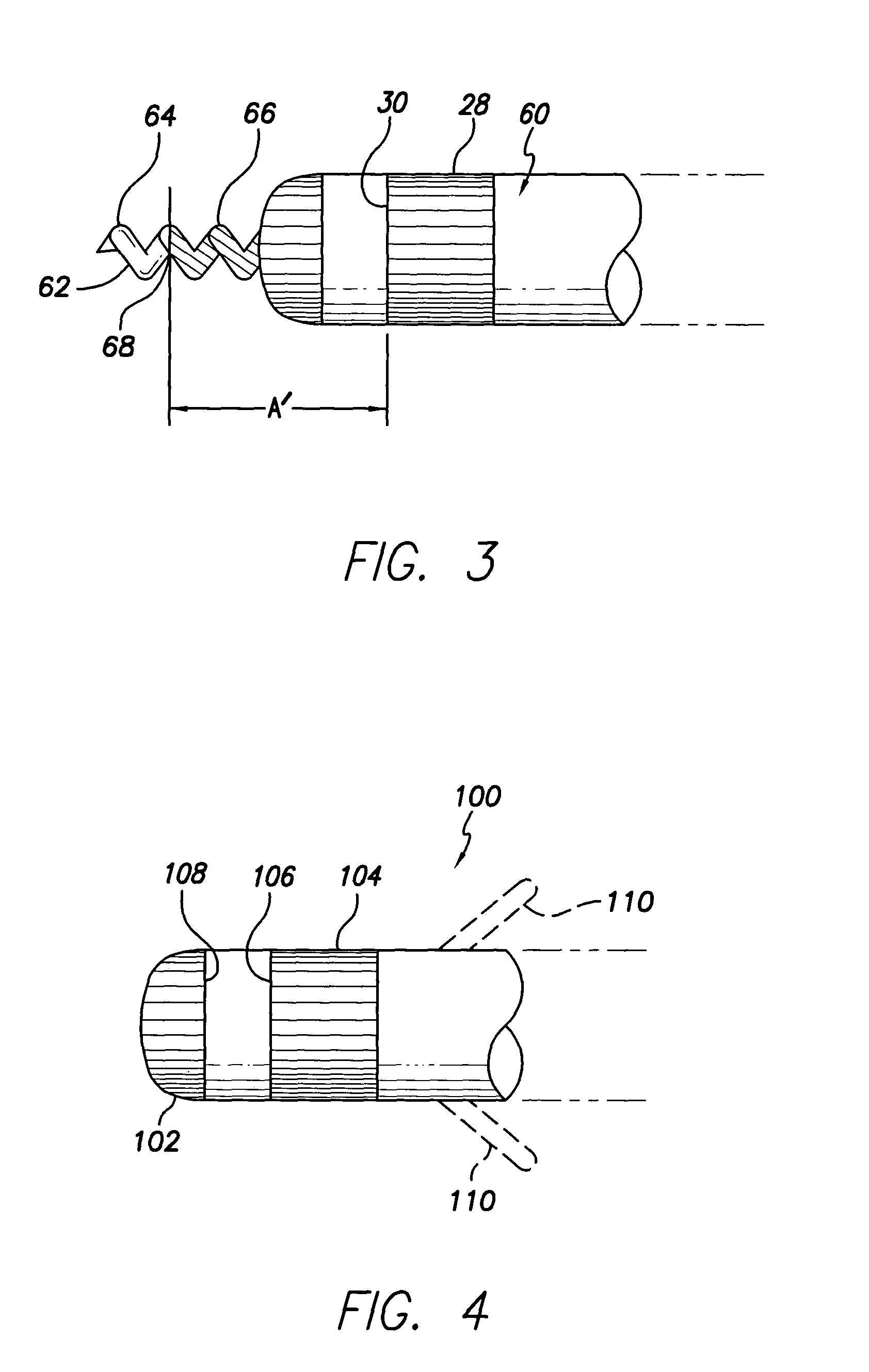Medical electrical lead providing far-field signal attenuation
a technology of far-field signal and medical electrical leads, which is applied in the direction of transvascular endocardial electrodes, internal electrodes, therapy, etc., can solve the problems of inability to suppress or attenuate the voltage level of far-field electrical signals, unable to achieve the effect of enhancing inhibition, optimizing the pacing and sensing performance of leads, and inhibiting fibrotic encapsulation
- Summary
- Abstract
- Description
- Claims
- Application Information
AI Technical Summary
Benefits of technology
Problems solved by technology
Method used
Image
Examples
Embodiment Construction
[0026]The following description presents preferred embodiments of the invention representing the best mode contemplated for practicing the invention. This description is not to be taken in a limiting sense but is made merely for the purpose of describing the general principles of the invention whose scope is defined by the appended claims.
[0027]With reference to FIGS. 1 and 2, there is shown a bipolar pacing and sensing lead 10 in accordance with a preferred embodiment of the present invention for epicardial or endocardial placement in electrical contact with the heart. The lead 10 includes a lead body 12 comprising a distal end 14 and a proximal end 16 joined by a tubular sheath or housing 18 made of an insulating, biocompatible, biostable material such as silicone rubber or polyurethane.
[0028]The distal end 14 of the lead body 12 terminates at a distal extremity 20. The distal extremity 20 defines a central aperture through which a rotatable, helical screw-in tip electrode 22 may ...
PUM
 Login to View More
Login to View More Abstract
Description
Claims
Application Information
 Login to View More
Login to View More - R&D
- Intellectual Property
- Life Sciences
- Materials
- Tech Scout
- Unparalleled Data Quality
- Higher Quality Content
- 60% Fewer Hallucinations
Browse by: Latest US Patents, China's latest patents, Technical Efficacy Thesaurus, Application Domain, Technology Topic, Popular Technical Reports.
© 2025 PatSnap. All rights reserved.Legal|Privacy policy|Modern Slavery Act Transparency Statement|Sitemap|About US| Contact US: help@patsnap.com



